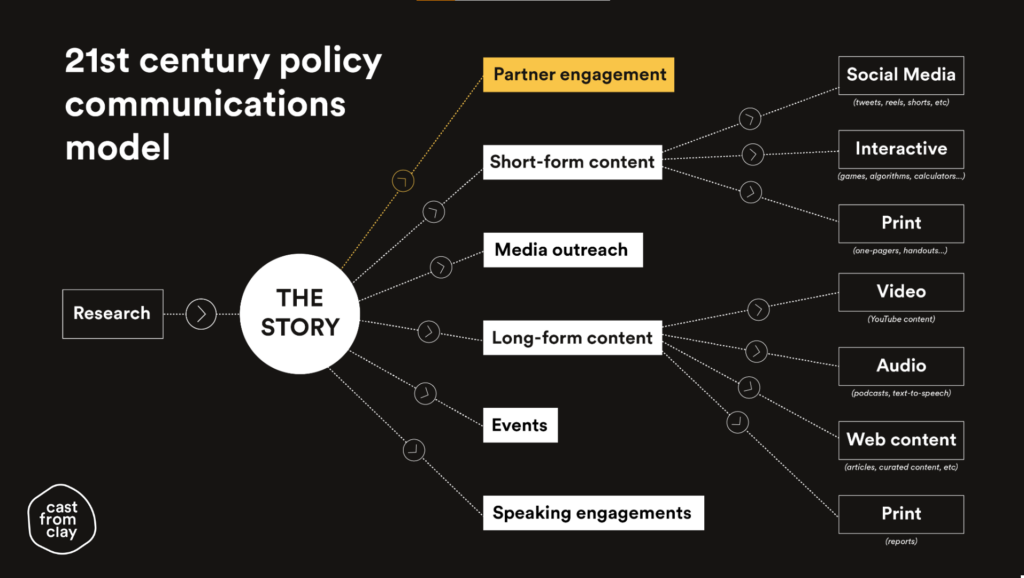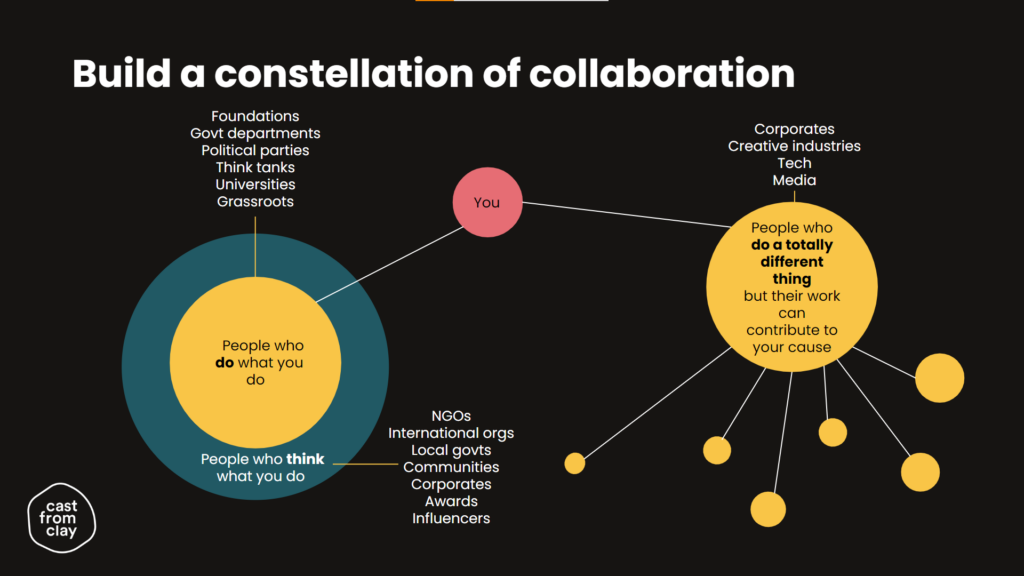With the latest influx of AI tools and the TikTok-isation of social media, it’s clear our digital world continues to accelerate at pace.
Socials feel more like entertainment centres. Much of the content there is like fast food: on-demand, under-nourishing and addictive. The platforms are absorbing, voyeuristic, predisposed to misinformation, and they’re absolutely infinite.
This is changing our attention and focus. And it creates the feeling that there is very little space left for complexity.
Paradoxically, the current state of global affairs brings an even greater need for complex analysis and research. Take Covid-19, or the war in Ukraine. People and societies have needed access to credible information in order to navigate these situations.
So, how can research and policy organisations – who trade in knotty ideas and nuanced information – bring their value to this space?
Don’t bring old models to new digital
Our dynamic space requires a dynamic communications model. Not one centred around a single report-launch.

You might already be familiar with our classic 21st century policy communications model. In this model, the focus is on sharing the story of the research, not just the report output. (I slightly tweaked this version to highlight the separation of short- and long-form content.)
Working with this model requires you to do three things:
1. Master your short-form
Done well, short-form can be smart and incisive. Granted, you won’t be able to fit your whole research into a 15 second video, or a Twitter thread. But you really don’t need to. You should use short-form to grow your audience and to attract attention to your other content.
2. Invest in your long-form
The idea that internet users now cannot tolerate anything longer than a 15-second video is simply not accurate. Think about video essays on YouTube, for example, which can range from 20 minutes to several hours.
In fact, YouTube is the second-largest search engine. But a surprising amount of policy organisations use it purely as an archive for uncurated content. Used well, it can be an amazing tool not only to deliver your messages but also to shape the environment and expand how people think about issues. That applies to all long-form.
3. Get ahead of the tech
The future of AI is shaping up right now, we need experts both using and analysing this technology. There are already a bunch of great tools out there. You can use them to deliver better-quality content and get inspired about what the future of digital looks like.
Be your own media
Policy organisations work really hard to get mentioned in the media or to raise their agenda with news outlets. This is a justified endeavour and should be an important part of your comms strategy. However, the media is still very much governed by what sells while a lot of topics and stories our industry produces are not often ‘easy to gain clicks on’.
This doesn’t mean that you should give up. Absolutely the opposite – you should strive to mediatize your content. Make it more accessible and engaging, gain your own followers, and make journalists part of it. (Our friends at Inkstick are a great example of this).
Because if you’re looking to achieve policy change, your role is to question if we’re having the right conversation and shift frames accordingly. This is a big task. You can’t do that with publishing one report or one news article.
Search for an easy solution
Imagine the internet… the endless universe of content, material, innovation, campaigns, websites, algorithms, apps, services, products. There is already so much that you can use without needing to reinvent the wheel.
I encourage you next time you have an idea to think about what is already out there – who is already out there – that can help you achieve your goal in a shorter period of time.
So before you start your research, think about who you can bring on board to share your ideas and make them more impactful.
Create impact clusters. Place yourself in a wider context. Think about who is already doing what you do. You probably know that by now.
Then make a list of people who think the way you do. They might have a very different profession, but they’re on the same page.

And then go broader. Look for people who do a totally different thing but whose work can contribute to your cause once you find the right incentive to engage them.
These could be corporate partners, creatives, tech experts. More and more companies now have Corporate Social Responsibility policies and engage in social issues such as environmental protection.
This might be your entrance point to audiences who have greater policy influence.
No doubt things are changing fast. But there’s still room for nuance, and perhaps a greater need for it than ever before.
If you need help implementing this in your organisation, we can help. Get in touch.
Image credit: Canva Studio on Pexels.





